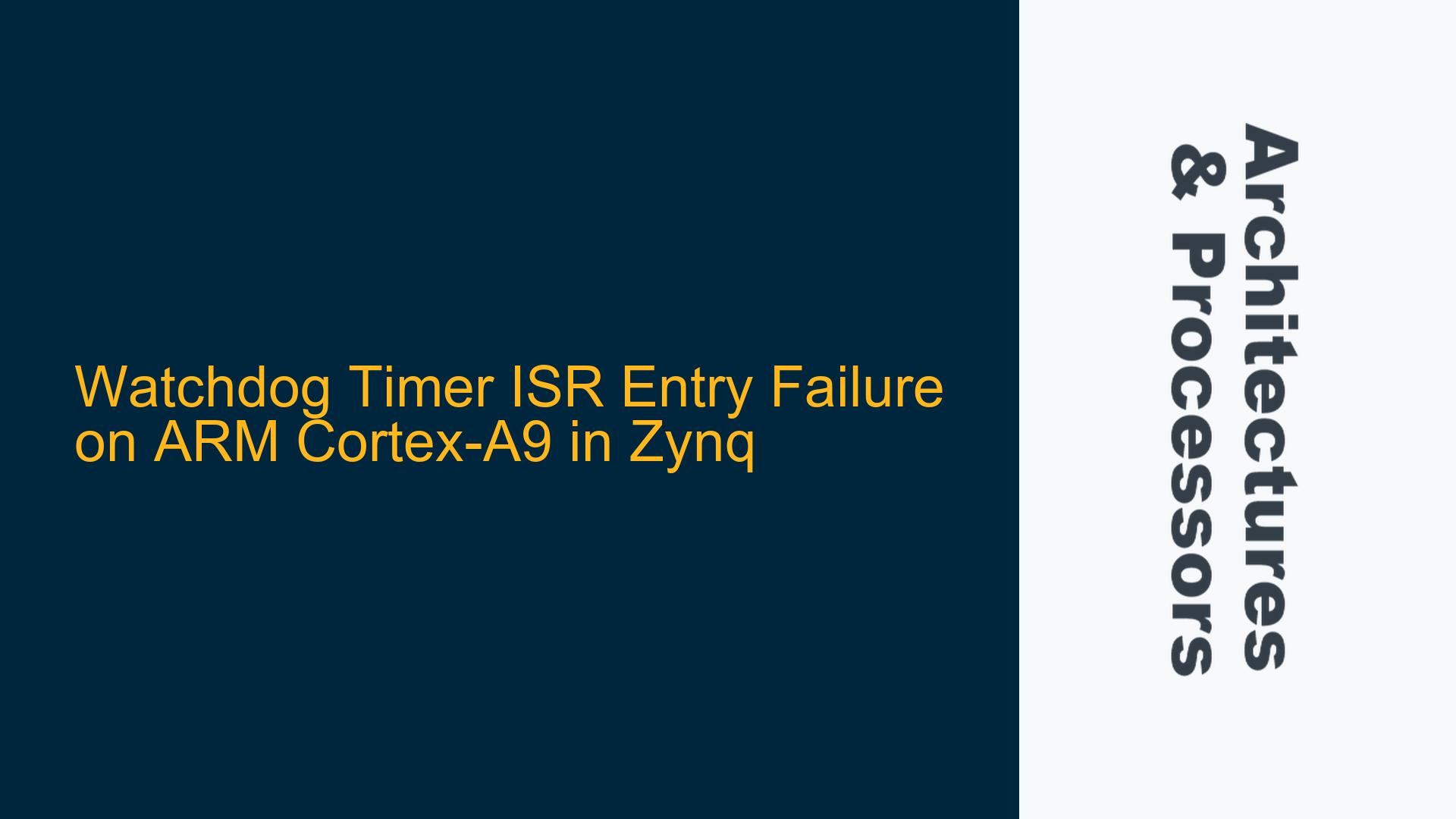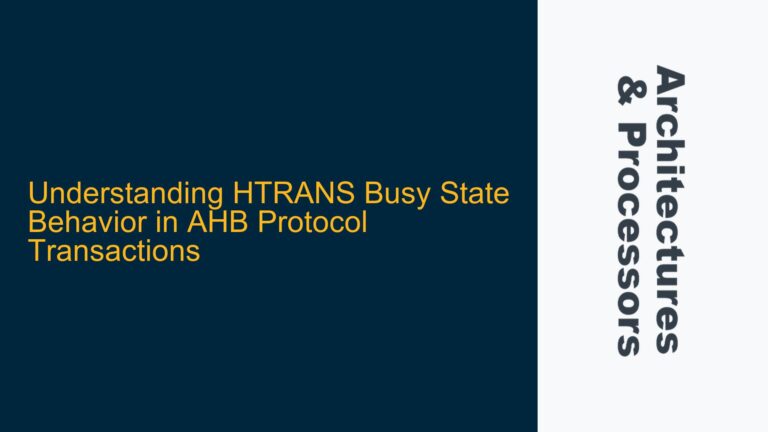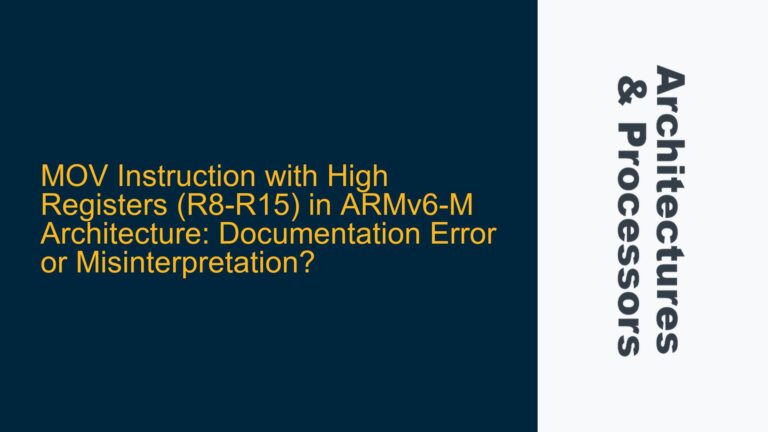ARM Cortex-A9 Watchdog Timer Interrupt Mode Configuration Issues
The ARM Cortex-A9 core, as implemented in the Zynq platform, provides a private watchdog timer module designed to ensure system reliability by triggering a reset in case of software or hardware failures. However, the watchdog timer’s behavior in interrupt mode is not functioning as expected. Specifically, when configured in watchdog mode, the timer fails to enter the Interrupt Service Routine (ISR) upon reaching zero, bypassing the intended interrupt mechanism and directly resetting the system. Conversely, in timer mode, the ISR is reached, but the absence of a counter reload does not trigger a reset, rendering it ineffective for watchdog functionality. This discrepancy highlights a critical configuration or design limitation in the watchdog timer module, which must be addressed to achieve the desired behavior of trapping faults while allowing the ISR to reload the counter and prevent an unnecessary reset.
The watchdog timer operates in two distinct modes: watchdog mode and timer mode. In watchdog mode, the timer is designed to reset the system upon reaching zero, ignoring any interrupt settings in its control register. This behavior is problematic for applications requiring fault trapping and recovery, as it prevents the ISR from being invoked to reload the counter. In timer mode, the ISR is invoked, but the absence of a counter reload does not trigger a reset, making it unsuitable for watchdog functionality. This dual-mode operation creates a challenge for developers seeking to implement a robust fault-detection mechanism using the watchdog timer.
The core issue lies in the inability to combine the interrupt-driven counter reload functionality of timer mode with the reset-triggering behavior of watchdog mode. This limitation necessitates a deeper understanding of the watchdog timer’s configuration, the interaction between the timer and the Global Interrupt Controller (GIC), and potential workarounds to achieve the desired functionality.
Watchdog Timer Mode Limitations and Interrupt Configuration Misalignment
The failure of the watchdog timer to enter the ISR in watchdog mode can be attributed to several factors, including misconfigured interrupt settings, improper initialization of the watchdog timer module, or inherent limitations in the timer’s design. One possible cause is the omission of critical configuration steps in the watchdog timer’s control register, such as enabling the interrupt signal or setting the appropriate priority level in the GIC. Without these settings, the watchdog timer may not generate an interrupt request, causing it to bypass the ISR and directly trigger a reset.
Another potential cause is the timing of the interrupt signal relative to the watchdog timer’s counter decrement. If the interrupt signal is generated too late in the timer’s countdown cycle, the system may reset before the ISR can be invoked. This timing issue could stem from delays in the interrupt handling pipeline, such as latency in the GIC or the processor’s interrupt handling logic. Additionally, the watchdog timer’s counter reload mechanism may not be synchronized with the interrupt signal, leading to a race condition where the counter reaches zero before the ISR can reload it.
The watchdog timer’s design may also impose inherent limitations on its behavior in interrupt mode. For example, the timer may be hardwired to prioritize reset functionality over interrupt generation in watchdog mode, making it impossible to invoke the ISR before a reset occurs. This design choice would align with the watchdog timer’s primary purpose of ensuring system reliability but would conflict with applications requiring fault trapping and recovery.
Finally, the interaction between the watchdog timer and the GIC may introduce additional complexities. The GIC’s configuration, including interrupt priority levels, masking, and routing, must align with the watchdog timer’s requirements to ensure proper interrupt handling. Misconfigurations in the GIC, such as incorrect interrupt ID assignment or improper priority settings, could prevent the watchdog timer’s interrupt signal from reaching the processor.
Implementing a Hybrid Timer-Watchdog Solution with ISR Reload
To address the watchdog timer’s limitations and achieve the desired functionality, a hybrid solution combining a dedicated timer and the watchdog timer can be implemented. This approach leverages the interrupt-driven counter reload capability of a dedicated timer while utilizing the watchdog timer’s reset functionality to ensure system reliability. The dedicated timer is configured to generate periodic interrupts, during which its ISR reloads both its own counter and the watchdog timer’s counter. This ensures that the watchdog timer’s counter is regularly refreshed, preventing it from reaching zero and triggering a reset under normal operation.
The implementation of this hybrid solution involves several steps. First, the dedicated timer must be configured to generate interrupts at a frequency sufficient to reload the watchdog timer’s counter before it reaches zero. The timer’s interrupt period should be shorter than the watchdog timer’s timeout period to account for potential delays in interrupt handling. Next, the watchdog timer must be configured in watchdog mode to ensure that a reset is triggered if the dedicated timer fails to reload its counter. This configuration ensures that the watchdog timer’s reset functionality remains active while relying on the dedicated timer for counter reloading.
The ISR for the dedicated timer must include logic to reload both the dedicated timer’s counter and the watchdog timer’s counter. This ensures that both timers remain synchronized and that the watchdog timer’s counter is refreshed before it reaches zero. The ISR should also include error-handling logic to detect and respond to potential faults, such as missed interrupts or counter reload failures. This error-handling logic can trigger additional recovery mechanisms, such as logging the fault or initiating a controlled system reset.
To ensure proper operation, the GIC must be configured to prioritize the dedicated timer’s interrupt signal and route it to the appropriate processor core. The interrupt priority level should be set to ensure timely handling of the timer interrupt, minimizing the risk of delays that could prevent the ISR from reloading the watchdog timer’s counter. Additionally, the GIC’s interrupt masking and routing settings must be verified to ensure that the dedicated timer’s interrupt signal is not blocked or misrouted.
The following table summarizes the key configuration steps for implementing the hybrid timer-watchdog solution:
| Component | Configuration Step | Purpose |
|---|---|---|
| Dedicated Timer | Set interrupt period shorter than watchdog timeout | Ensure timely reload of watchdog counter |
| Enable interrupt generation | Allow ISR to be invoked | |
| Watchdog Timer | Configure in watchdog mode | Enable reset functionality |
| Set timeout period longer than dedicated timer’s interrupt period | Prevent premature reset | |
| GIC | Assign dedicated timer’s interrupt ID | Route interrupt signal to processor |
| Set appropriate interrupt priority level | Ensure timely handling of timer interrupt | |
| ISR | Reload dedicated timer’s counter | Maintain periodic interrupt generation |
| Reload watchdog timer’s counter | Prevent watchdog timer from reaching zero | |
| Implement error-handling logic | Detect and respond to faults |
By implementing this hybrid solution, developers can achieve the desired functionality of trapping faults while preventing unnecessary resets. This approach leverages the strengths of both the dedicated timer and the watchdog timer, providing a robust mechanism for ensuring system reliability in bare-metal applications. For RTOS-based applications, the use of a low-priority task to reload the watchdog timer remains a viable alternative, as suggested in the original discussion. However, the hybrid solution offers a more flexible and scalable approach for bare-metal systems, where task scheduling and prioritization are not available.
In conclusion, the failure of the ARM Cortex-A9 watchdog timer to enter the ISR in watchdog mode stems from a combination of configuration issues, timing constraints, and inherent design limitations. By implementing a hybrid timer-watchdog solution with ISR reload, developers can overcome these challenges and achieve the desired fault-trapping functionality. This approach requires careful configuration of the dedicated timer, watchdog timer, and GIC, as well as robust error-handling logic in the ISR. With these measures in place, the watchdog timer can effectively serve its purpose of ensuring system reliability while providing the flexibility needed for fault detection and recovery.






